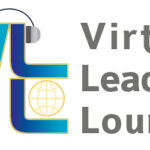THE 7 key competencies which make you highly effective as a virtual leader
Looking into larger organisations and how their structures have evolved over the past years I see the dispersion of functions and their teams across sites, national or global, as the norm. As a response to this shift lot of publications have happened, be it books, academic papers or articles, blogs, on virtual teams and virtual leadership. We have followed this shift in our blogs as have put more focus on the theme of virtual working.

Over the recent past I’ve taken the time to review many publications distilling key points to compare them with my own experiences. Here is the one message from what these authors have written, aligned with my observations:
Leaders who are seen to be highly effective in a face-to-face setting can only apply part of this experience in a virtual context. They must understand the challenges faced by virtual teams and virtual organisations and must invest increased efforts into dealing with these challenges.
The key challenges here are:
- Lack of trust over distance
- Increased diversity across cultural boundaries
- Blurred lines between work and life across time zones
As a consequence I want to take a look at the leadership competencies necessary to deal with these challenges. Through a combination of my literature search and my own experience I have created a list of the top seven competencies for effective virtual leaders which I want to present to you in this blog. Just presenting a list of competencies would not add much value.
Therefore, in the following I will introduce the seven competencies I have identified with brief definitions of each without diving into detailed explanations. Those explanations and some tips on how you can develop these competencies will follow in a series of posts over the next few weeks in which I discuss them one by one.
Those 7 key competencies are:
Self leadership:
Globally dispersed organisations limit physical presence and seem to be active 24/7. Self leadership is key! This the extra element in this competency, beyond its foundational aspects, focuses on your attitude towards availability and how you manage your virtual presence. It also covers your approach to virtual interactions and your associated mindset.
Effective communication:
A virtual context has limitations on casual exchange and communication. As it requires planning and attention this encompasses a high awareness for active listening and the ability to be very responsive and concise in your communication. In addition, it includes how savvy you are with technology in order to collaborate effectively.
Productive relationships:
Trust is the foundation of any productive relationship. Dispersed teams lack the frequent connection to naturally build and maintain trust. It needs proactive steps! Therefore, this focuses on your ability to build and maintain trust over distance.
Intercultural sensitivity:
Globally dispersed teams cross many cultural boundaries. Diversity offers great advantages if used consciously! This competency focuses on your ability to integrate cultural diversity in your virtual context and using it to the advantage of the team and the organisation.
Direction and meaning:
A virtual context has the inherent risk of “out of sight, out of mind,” losing connection to WHY one works with others. Alignment in teams is essential to be productive. Giving meaning is THE source for intrinsic motivation! This competency is about providing vision and purpose as well as clear goals and objectives to dispersed members of an organisation. The goal is to help/foster self motivation and alignment in the virtual team.
Talent development:
Legal constructs require local bosses, though they often have no detailed knowledge about what ‘their’ people do in the respective virtual team. Talent development needs to be driven by those who use and need the talent! Hence, your ability to foster skills and competencies of your virtual team members is key for your success. Additionally your team members will appreciate your investment and be more motivated in working for you. Of course this has to happen on alignment with the respective local boss.
Awareness for team dynamics:
Any critical situations or conflicts in teams start with subtleties. These can be difficult to catch with limited interactions. This last competency covers your ability to pay attention to such subtleties as well as to the quality of collaboration and relationships present in the virtual team.
So, over the course of the next few weeks I will dive deeper into each of these competencies in a separate post. I will present ideas and tips how to develop them further. If you have any comments or questions please use the comment function below or get in touch with me direct. And I will respond as quickly as possible.
I am very interested to start a discussion here that can potentially benefit you and others.
Join us online! 
We explore this and other business relevant subjects in our Virtual Leaders Lounge. This is an informal online meeting of maximum 10 business leaders where we discuss challenges in virtual teams and organisations and share best practices. No PowerPoint is used, no prep work required!
Check it out here or register direct so you get the invitations and have a chance to get one of the 10 seats available for a lounge session.




